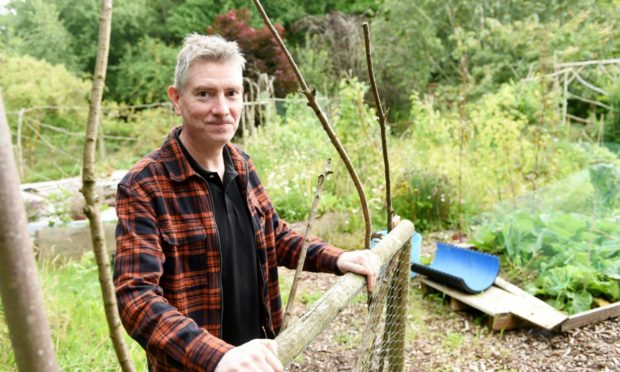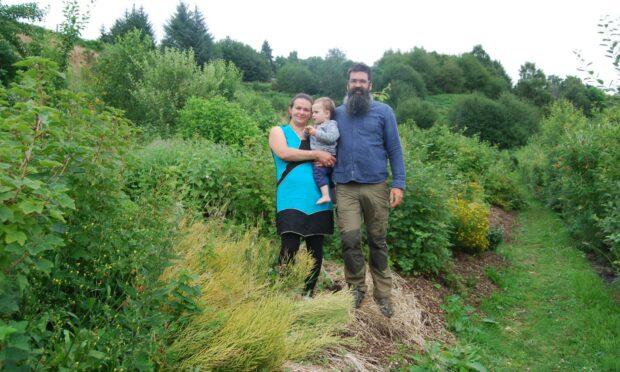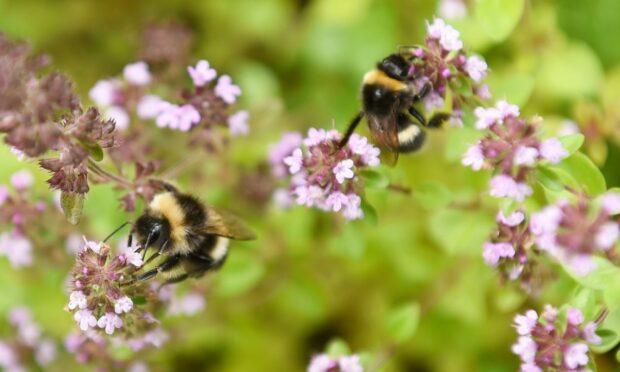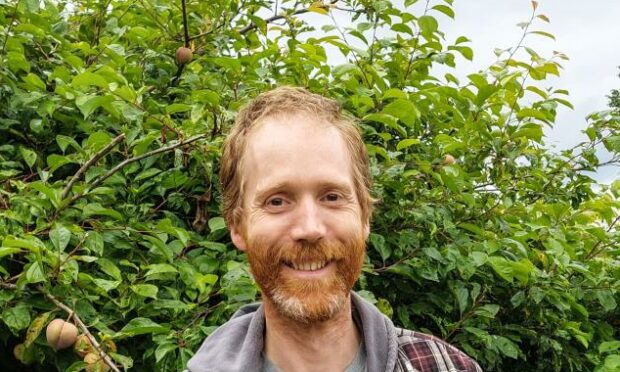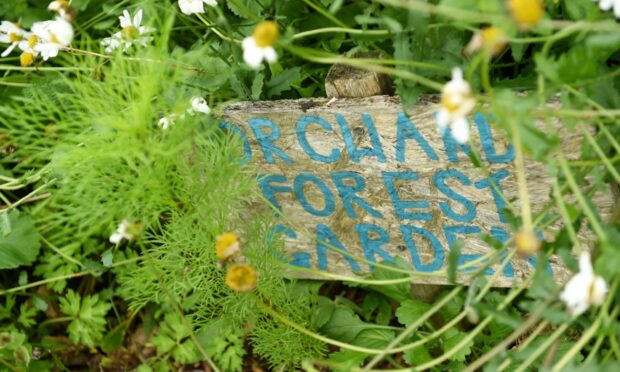At a time of crisis, a growing number of people are realising that helping the environment can start in their own garden.
The recent warning report from the Intergovernmental Panel on Climate Change (IPCC) highlighted the human effects on the planet.
Action is also needed to tackle habitat loss and a biodiversity emergency.
At the same time, food supplies are threatened by the pandemic, Brexit and driver shortages.
It has led to increased interest in our relationship with nature and ‘grow your own’ food practices.
A lifestyle with roots in indigenous cultures
Food forests and forest gardens are becoming more common in the north of Scotland, based on the permaculture approach to land management.
This uses agricultural ecosystems in a holistic, self-sufficient and sustainable way.
It harnesses practices based on crop diversity, resilience, natural productivity and sustainability.
The permaculture lifestyle started in Australia using principles indigenous cultures have adopted for thousands of years.
Daniel Holm worked in remote jungles in Indonesia and Ecuador, where he was “blown away” by the diversity of plant life and the fruits it produced.
He is also inspired by his grandmother Jane Holm, who grew up on the frontier in Canada, living off the land.
She brought this way of life to Scotland when she moved to live in Rosemarkie.
Daniel and his partner Frederique operate a food forest on a two-acre site in Ardross.
It started as a regular vegetable garden into which they added more unusual plants, including oca, or yams, and melons suitable to a colder climate.
I realised that I could grow much more with a lot less effort.
Daniel Holm
Daniel said: “I came across forest gardening and permaculture practices and realised that I could grow much more with a lot less effort.
“The garden began providing a much more diverse selection of habitats for wildlife and fewer pests.
“It will become more and more productive as the years pass and the perennials become more established.”
Gardens become increasing productive
Daniel, who has an MSc in conservation biology, is a ranger on the Bunloit Estate. It was bought last year by Jeremy Leggat, a former scientific director at Greenpeace, who is involved in a rewilding project.
As well as crops such as apples, pears, cherries and plums he experiments with persimmons, paw paws, honeyberries, goji berries, kiwis and other plants.
“We have a very varied diet of fresh fruit and vegetables, often types and varieties you could not find in the shops,” he added.
Most plants in a forest garden are perennials, meaning less work is required every year compared with annual growing.
Daniel added: “For annuals the ground needs prepared each year, seeds need started and looked after up to planting out.
“However perennials just need planted once and every year become more and more productive with minimal maintenance.”
According to the Permaculture Association, the system has at its heart three ethics – earth care, people care and fair share.
Havens for wildlife
Species are chosen not just for food but also to help take nutrients from lower levels of soil, making a garden largely self-feeding.
Diversity of plants creates resilience in food production.
This diversity, and the fact most plants can complete their full annual cycle of flowering and seeding, providing flowers or fruits throughout the year, means forest gardens are also havens for wildlife.
Steve Marquis, who is based near Thurso, is a permaculture teacher and projects network development officer in Scotland for the Permaculture Association.
He is developing his own garden site and supports the Thurso Grows project for the Thurso Community Development Trust.
He said: “Permaculture comes in many respects from indigenous roots.
“People in South America and Asia have been making gardens in the jungle using no fertilisers and just letting nature get on with it.
“We’ve adopted the practice into forest gardening.
“It has definitely attracted more interest during the pandemic. People have had time on their hands so have spent it in the garden.
“Those who have dug a bit deeper have come across permaculture.
“It’s the mindset that appeals to people. It’s working with nature, caring for the environment and caring for each other.”
Have your garden and eat it
Aberdeen-based forester and gardener Alan Carter says forest gardening is the ability to “have your garden and eat it”.
His new book ‘A Food Forest in Your Garden’ offers help to people starting from scratch.
“It’s a very efficient way of growing,” he said.
“It’s also been given a big boost recently during the pandemic.
“I’ve heard a lot of people say Covid has given them a new appreciation of growing their own food, where the food comes from and getting engaged with nature.
“The climate emergency also definitely comes into it.
“Folk are realising this is a way of growing local, resilient food that does not have an impact on the climate.
“It’s less work once you get established and it provides more interesting food for a longer period.”
Among more common produce, he also grows exotic-sounding edible plants including ostrich fern, sweet cicely, hostas, small-leaved lime and dogtooth violet.
“The biggest challenge for most of the species is to learn how to cook and eat them as well as grow and look after them.”
Permaculture projects have also sprung up in places including Sutherland, Ross-shire and Moray.
Climate crisis concerns
Clive Brandon and Julie Plumridge run Black Isle Permaculture and Arts near Tore, a demonstration site for permaculture practices.
“We get a lot of people contacting us because they’ve heard of permaculture or ‘no dig’ gardening.
“They are concerned about the climate crisis or are interested in growing their own food”, said Clive.
“It’s becoming more mainstream as people make changes to how they live.
“But is it happening quickly enough?
“What we’re talking about now should have happened ten years ago.
“It’s becoming more mainstream as people make changes to how they live.
Clive Brandon
“The IPCC report and COP26 are saying we should be doing more to live more harmoniously with nature.”
He added: “Recent events like Brexit and the lorry drivers’ shortage have shown the fragility of food supplies, with stocks running out and shops having empty shelves.
“It makes people more aware where their food is from and how it gets to them.
“Even if you grow a few herbs on the windowsill or a few tomatoes, it’s making a difference and providing a source of food of your own.”
